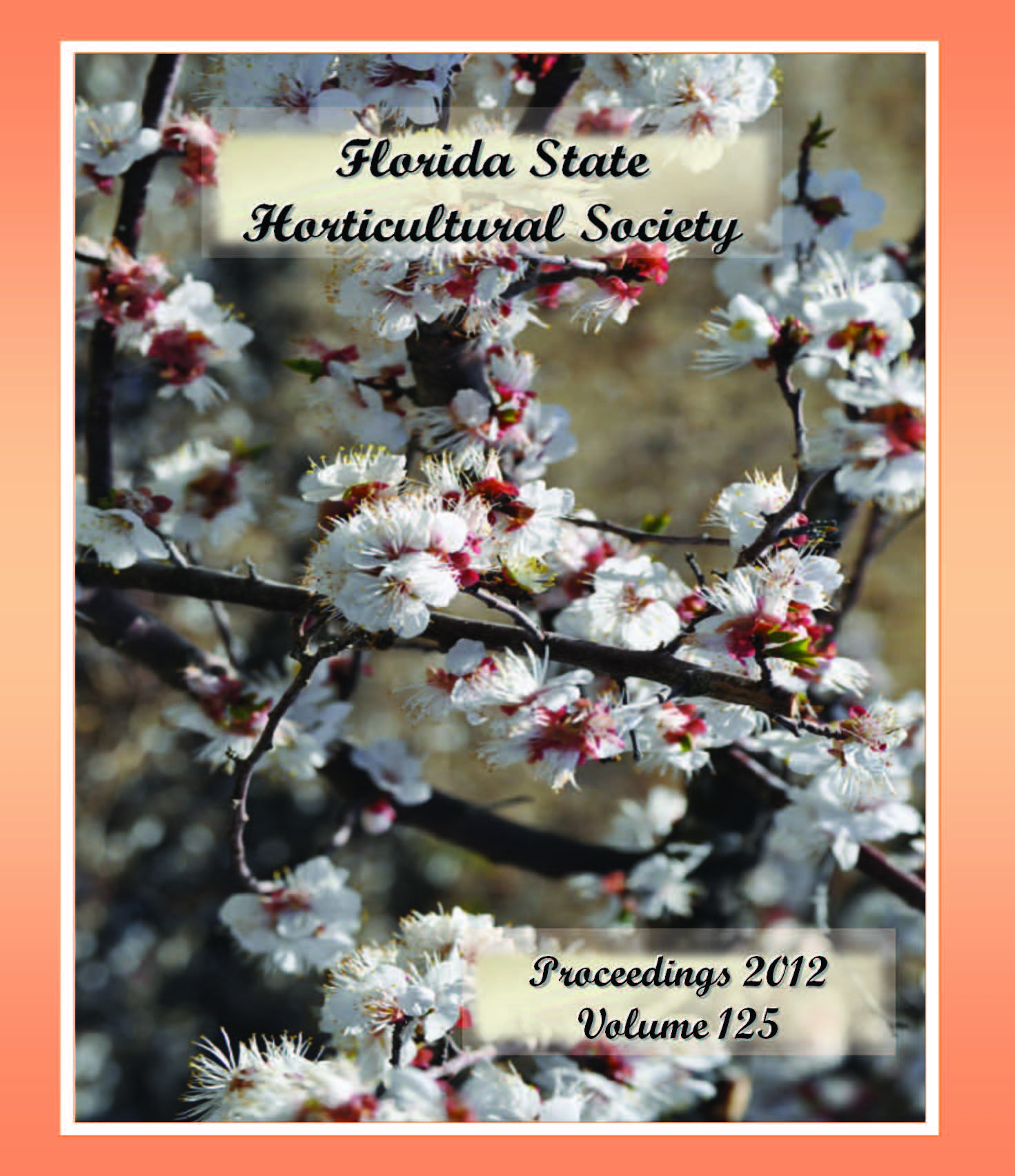Publicado 2012-12-01
Palabras clave
- nutritional sprays,
- peel blemishes,
- phosphites,
- phytotoxicity,
- tank mixes
Resumen
A high incidence of Huanglongbing (HLB) in the Indian River production area of Florida has resulted in the increased use of foliar nutritional sprays on citrus to attempt to manage the debilitating effects of the disease. Foliar sprays containing various combinations of nitrogen (N), potassium (K), boron (B), iron (Fe), manganese (Mn), zinc (Zn), and phosphite products are often combined in tank mixes with insecticides and copper (Cu) fungicides. Many copper fungicide labels recommend that tank mix combinations be adjusted to a pH of 6.5 to avoid phytotoxicity or burns to leaves and fresh citrus fruits. Both surface and artesian water sources may be utilized in spray mix operations, resulting in considerable variability in the pH of these tank mixes and a potential for phytotoxicity. Peel blemishes are an issue in the fresh fruit industry, perhaps indicating that the acidity of tank mixes is not being effectively monitored in the field. During the spring of 2012, tank mix ingredients, pH, total dissolved solids (TDS), and compatibility data were collected from a number of tank mix combinations utilized by growers. The results from this project indicated how effectively the pH of these tank mixes is being managed by growers and could be used to guide the possible development of practical recommendations to avoid phytotoxicity.

